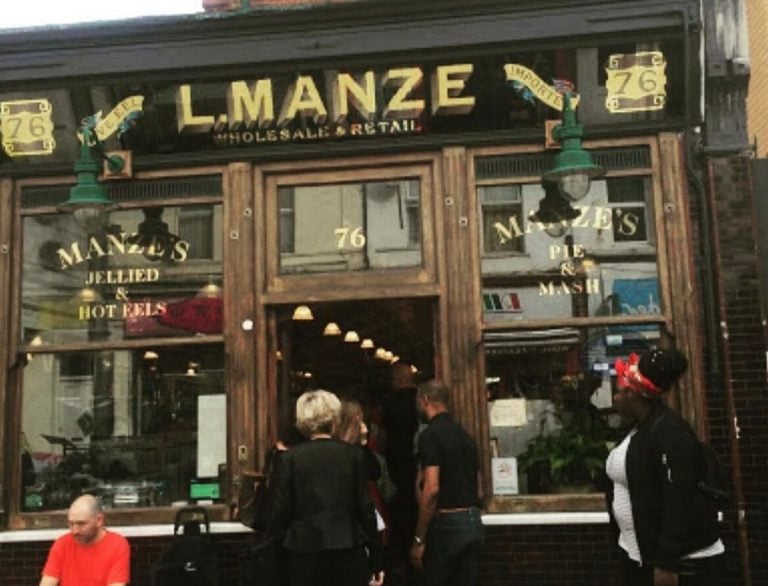In the early 1740s, London yachtsmen often sailed to Twickenham Ait, an island in Richmond originally known by that name, to eat their eel pie at a renowned inn. The tavern in question was the Eel Pie House, and in those days it became the scene of sumptuous banquets every night, all based on Thames eels, skinned, boned and stewed, served alone or inside a fragrant puff pastry shell.
M. Manze, London's oldest eel shop
It was a meeting place, before it was a place to eat, so important that over time the little island was renamed Eel Pie Island, in honour of the house speciality. Today the inn no longer exists, but there is still an 'eel pie house' in London, the oldest in the city (some say in the world), named after one of the first owners, Michele Manze, who in 1902 inherited the business opened in the late 19th century by his father-in-law, Robert Cooke. A successful format that in the 1930s counted no fewer than 14 locations around the British capital. M. Manze now has only three outlets, is run by Rick Poole and unfortunately no longer serves eel cakes. The fish, however, can still be tried, either jellied or stewed, although business has not been very good lately. Times have changed and so have customers' tastes: whereas up until the 1970s eels were a common meal among Londoners, served at city markets and a staple in savoury pies, today not many people appreciate the product.
What we eat at M. Manze today
The ambience, however, has remained the same, especially at the Tower Bridge Road location, the oldest: here, stepping through the restaurant's threshold takes one on a journey back in time. Social tables with marble tops, dark wooden benches, an old gilded cash register (stolen and then recovered by Poole) and many other period details make the restaurant unique. They eat other kinds of pies, mostly meat, accompanied by mashed potatoes, but they also make eel casserole (no longer caught in the Thames but in Northern Ireland's Lough Neagh) to order. Demand continues to be low, despite the fact that this is one of the most deeply rooted foods in London's cultural background, which in Victorian times was eaten as a walking hot dog, an authentic local street food on a par with the more famous fish and chips. And there are many who believe that M. Manze was the city's first real fast food.
The importance of eels in London
Not only a prized meal, but also a bargaining chip, eels have been a valuable resource for the English, just think that during the Middle Ages they began to be used to pay rent or taxes. It is estimated that in the 16th century more than 540,000 eels were used by the inhabitants to meet household expenses. Today, not only are they no longer common on the table, but they are also at risk of extinction: the European eel used to be very common in the Thames, while today it is almost impossible to find, so much so that for years there has been a project, Thames 21, aimed at improving the water quality of the river in order to safeguard its fauna. But, as Poole told the BBC, the older generations are still attached to the product, and the owner is confident that eels will once again be an integral part of London's history, “they will stand the test of time, I'm sure of it”.


 Farewell cacio e pepe in New York. "With tariffs, Pecorino Romano will also become more expensive." The warning from Giuseppe Di Martino
Farewell cacio e pepe in New York. "With tariffs, Pecorino Romano will also become more expensive." The warning from Giuseppe Di Martino Against tariffs? Here are the US foods that could be "hit"
Against tariffs? Here are the US foods that could be "hit" US tariffs: here are the Italian wines most at risk, from Pinot Grigio to Chianti Classico
US tariffs: here are the Italian wines most at risk, from Pinot Grigio to Chianti Classico "With U.S. tariffs, buffalo mozzarella will cost almost double. We're ruined." The outburst of an Italian chef in Miami
"With U.S. tariffs, buffalo mozzarella will cost almost double. We're ruined." The outburst of an Italian chef in Miami "With US tariffs, extremely high risk for Italian wine: strike deals with buyers immediately to absorb extra costs." UIV’s proposal
"With US tariffs, extremely high risk for Italian wine: strike deals with buyers immediately to absorb extra costs." UIV’s proposal






